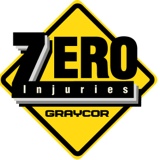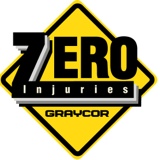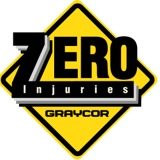Information
-
Document No.
-
ArcelorMittal Monessen Coke Battery
-
Conducted on
-
Personnel Conducting Observation
-
LOCATION OF TASK OBSERVED:
-
DATE & TIME OF OBSERVATION:
-
BRIEF DESCRIPTION OF WORK BEING OBSERVED:
-
NUMBER OF PEOPLE BEING OBSERVED:
- 1
- 2
- 3
- 4
- 5
- 6
- 7
- 8
- 9
- 10
- 11
- 12
- 13
- 14
- 15
- 19
- 20
- >20
-
CRAFT BEING OBSERVED
- Ironworker
- Boilermaker
- Laborer
- Carpenter
- Cement Finisher
- Pipefitter
- Operator
- Electrician
- Painter
- Insulator
- Other
-
EQUIPMENT BEING WORKED ON (OPTIONAL):
-
WAS A PRE-JOB BRIEFING CONDUCTED?
-
WAS "EYES ON PATH" USED DURING YOUR OBSERVATION?
-
WAS "EYES ON HANDS" USED DURING YOUR OBSERVATION?
CATEGORY A - Communication
-
All craft participated in Pre-task meeting and understand task hazards. A.1
-
Workers demonstrate a questioning attitude about their surroundings. A.2
-
Work groups share information about identified hazards with other nearby workers. A.3
-
Workers are paired up (buddy system) as a good practice. A.4
-
Backing vehicles and vehicles in congested areas are using spotters. A.5
CATEGORY B - Personal Protective Equipment
-
Personal Protective Equipment is correct for the hazard. B.1
-
PPE is being used properly and is in good condition. B.2
-
Hot work PPE is in good condition and free of holes. B.3
CATEGORY C - Housekeeping
-
Scrap material is controlled to prevent accumulations on walking and working surfaces. C.1
-
Work areas are cleaned before work begins. C.2
-
Work areas are maintained clean and orderly during the work day. C.3
-
Cords, leads and hoses are elevated above work areas and walkways. C.4
-
Cords, leads and hoses are protected from damage caused by vehicle traffic. C.5
CATEGORY D - Tools
-
Tools are inspected before use and are in good condition. D.1
-
Tools in use are correct for the task and are used properly. D.2
-
Measures are in place to prevent dropped tools and material from reaching a lower work elevation. D.3
-
Defective tools are immediately discarded or removed from the work area. D.4
CATEGORY E - Rigging and Lifting Practices
-
Rigging equipment is inspected before use. E.1
-
The crane is level and all outriggers are placed on pads. E.2
-
There is one dedicated signal person and clear signals are provided. E.3
-
Tag lines are used on all loads. E.4
-
The load path is clear of overhead obstructions and hazards. E.5
-
Others are audibly alerted to overhead loads and lift areas are identified by barriers or spotters. E.6
CATEGORY F - Fall Protection
-
Fall protection equipment is inspected before use and in good condition. F.1
-
Harness is worn and adjusted properly. F.2
-
Anchor point is above users back D-ring. F.3
-
Equipment and attachment configuration prevents contact with a lower elevation in the event of a fall. F.4
-
User remains within 15 degrees of attachment point prevent a swing fall. F.5
-
User remains tied off 100% of the time while at elevation. F.6
Observation Feedback
-
Observation Category
- A- Personal Protective Equipment
- B- General Awareness
- C- Work Practices
- D- Procedures and Best Practices
- E- Communication
-
Feedback Provided
-
Observation Category
- A- Personal Protective Equipment
- B- General Awareness
- C- Work Practices
- D- Procedures and Best Practices
- E- Communication
-
Feedback Provided
-
Observation Category
- A- Personal Protective Equipment
- B- General Awareness
- C- Work Practices
- D- Procedures and Best Practices
- E- Communication
-
Feedback Provided
Pre-Incident Learning Questions
-
How can someone get hurt doing this task? How have we avoided that?
-
Have you experienced or heard of recent close calls? What happened? What did we do about it?
-
What is your biggest safety concern on this job?
-
9/29/2013 Frank Deller Failure to feedback is acceptance of the behavior.









